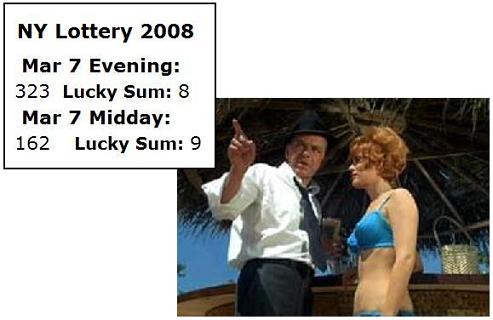From the geometry page
at cut-the-knot.org:
Related material:
this date three years ago
From the geometry page
at cut-the-knot.org:
Related material:
this date three years ago
From a summary of Sartre’s Being and Nothingness:
“The human can never know being as it truly is, for to do that, one would have to be the thing itself. To know a rock, we have to be the rock (and of course, the rock, as a being-in-itself, lacks consciousness). Yet the being-for-itself sees and intuits the world through what is not present. In this way, the being-for-itself, already wholly free, also possesses the power of imagination. Even if absolute beauty (to Sartre, the absolute union of being and consciousness) cannot be apprehended, knowing it through its absence, as in the way one feels the emptiness left by a departed loved one, is its own truth.”
— Anonymous author at sparknotes.com
"From this I reach what I might call a philosophy; at any rate it is a constant idea of mine; that behind the cotton wool [of daily life] is hidden a pattern; that we– I mean all human beings– are connected with this; that the whole world is a work of art; that we are parts of the work of art. Hamlet or a Beethoven quartet is the truth about this vast mass that we call the world. But there is no Shakespeare, there is no Beethoven; certainly and emphatically there is no God; we are the words; we are the music; we are the thing itself."
— Virginia Woolf, "A Sketch of the Past," 1939-40, in Moments of Being
"And I a maid at your window,
To be your Valentine."
"Ophelia’s story becomes the Story of O– the zero, the empty circle or mystery of feminine difference, the cipher of female sexuality to be deciphered by feminist interpretation."
— Elaine Showalter, "Representing Ophelia: Women, Madness, and the Responsibilities of Feminist Criticism." Hamlet. Ed. Susanne L. Wofford. Boston: Bedford Books of St.Martin’s Press, 1994. 220-238.
"Judgment at Nuremberg" screenwriter
Abby Mann in this morning's
New York Times obituaries:
Click image to enlarge.
Related material:
The Log24 entries of
March 15 – 25.
(Tuesday, March 25, was the
date of Mann's death.)
"Philosophers ponder the idea
of identity: what it is to give
something a name on Monday
and have it respond to
that name on Friday…."
— Bernard Holland in
The New York Times
See also the five Log24
entries ending on Feb. 25.
Back to the Garden
Film star Richard Widmark
died on Monday, March 24.
From Log24 on that date:
"Hanging from the highest limb
of the apple tree are
the three God's Eyes…"
Related material:
The Beauty Test, 5/23/07–
H.S.M. Coxeter's classic
Introduction to Geometry (2nd ed.):

Note the resemblance of
the central part to
a magical counterpart–
the Ojo de Dios
of Mexico's Sierra Madre.
From a Richard Widmark film festival:
GARDEN OF EVIL
Henry Hathaway, 1954
"A severely underrated Scope western, shot in breathtaking mountain locations near Cuernavaca. Widmark, Gary Cooper and Cameron Mitchell are a trio of fortune hunters stranded in Mexico, when they are approached by Susan Hayward to rescue her husband (Hugh Marlowe) from a caved-in gold mine in Indian country. When they arrive at the 'Garden of Evil,' they must first battle with one another before they have to stave off their bloodthirsty Indian attackers. Widmark gives a tough, moving performance as Fiske, the one who sacrifices himself to save his friends. 'Every day it goes, and somebody goes with it,' he says as he watches the setting sun. 'Today it's me.' This was one of the best of Hollywood veteran Henry Hathaway's later films. With a brilliant score by Bernard Herrmann."
See also
the apple-tree
entries from Monday
(the date of Widmark's death)
and Tuesday, as well as
today's previous entry and
previous Log24
entries on Cuernavaca.
Click image to enlarge.
The “Boy’s Life” illustration is of an Arthur C. Clarke story, “Against the Fall of Night.” This, according to the review quoted below, was Clarke’s first story, begun in 1936 and first published in 1948. The title is from a poem by
From a book review by Christopher B. Jones:
“Against the Fall of Night describes well how it often takes youth to bring forth change. The older mind becomes locked in a routine, or blocks out things because it has been told that it shouldn’t think or talk about them. But the young mind is ever the explorer, seeking out knowledge without the taboos placed on it by a rigid society. Alvin is a breath of fresh air in the don’t-look-over-the-wall society of Diaspar.
Myths play a big role, and an interesting religious overtone pervades the story with a long since departed being whose origins are unknown and who played an important part in Earth’s past. Parallels to Jesus can easily be drawn, and the forecast shown for the longevity of religions in general seems to me to be rather accurate….
Finally, when Alvin uncovers part of the truth he has been looking for, he learns of the dangers and stagnation that can befall a xenophobic society. There are still a few such societies in the world today, and this characteristic almost always comes with negative effects– even if it has been cultivated with the intention to protect.”
An example of such a xenophobic society is furnished by the Hadassah ad currently running in the New York Times obituaries section: “Who will say Kaddish in Israel?”
Another example:
Tom Stoppard, in the London Times of Sunday, March 16, 2008, on the social unrest of forty years ago in 1968–
“Altering the psyche was supposed to change the social structure but, as a Marxist, Max knows it really works the other way: changing the social structure is the only way to change the psyche. The idea that ‘make love, not war’ is a more practical slogan than ‘workers of the world unite’ is as airy-fairy as the I Ching.”
Airy-fairy, Jewey-phooey.
Clarke’s 1948 story was the basis of his 1956 novel, The City and the Stars. In memory of the star Richard Widmark, here are two illustrations from St. Mark’s Day, 2003:
Housman asks the reader
to tell him of runes to grave
or bastions to design
“against the fall of night.”
Here, as examples, are
one rune and one bastion.
|
Represents |
|
Neither part of this memorial suits the xenophobic outlook of Israel. Both parts, together, along with his classic film “The Long Ships,” seem somehow suited to the non-xenophobic outlook of Richard Widmark. As for the I Ching… perhaps Widmark has further voyages to make.
The previous entry was inspired (see the "In the Details" link) by the philosophical musings of Julie Taymor… specifically, her recollection of Balinese dancers–
"… they were performing for God. Now God can mean whatever you want it to mean. But for me, I understood it so totally. The detail….
They did it from the inside to the outside. And from the outside to the in. And that profoundly moved me then. It was… it was the most important thing that I ever experienced."
— Julie Taymor,
"Skewed Mirrors" interview
Here is some further commentary on the words of that entry–
On the phrase "Within You Without You"– the title of a song by George Harrison:
"Bernard’s understanding of reality connects to this idea of 'flow': he sees reality as a product of consciousness. He rejects the idea of an 'outer' world of unchanging objects and an 'inner' world of the mind and ideas. Rather, our minds are part of the world, and vice versa."
— Adrien Ardoin, SparkNote on
Virginia Woolf's The Waves
On "Death and the Apple Tree"– the title of the previous entry— in The Waves:
"The apple tree Neville is looking at as he overhears the servants at the school discussing a local murder becomes inextricably linked to his knowledge of death. Neville finds himself unable to pass the tree, seeing it as glimmering and lovely, yet sinister and 'implacable.' When he learns that Percival is dead, he feels he is face to face once again with 'the tree which I cannot pass.' Eventually, Neville turns away from the natural world to art, which exists outside of time and can therefore transcend death. The fruit of the tree appears only in Neville’s room on his embroidered curtain, a symbol itself of nature turned into artifice. The apple tree image also echoes the apple tree from the Book of Genesis in the Bible, the fruit of which led Adam and Eve to knowledge and, therefore, expulsion from Eden."
— Adrien Ardoin, op. cit.
Death and
the Apple Tree
Today's New York Times on the late "fifth Beatle" Neil Aspinall, who died Easter night in Manhattan:
"… he played tambura (an Indian drone instrument) on 'Within You Without You'."
Related material:
"Hanging from the highest limb
of the apple tree are
the three God's Eyes…"
|
"But what's beautiful can't be bad. You're not bad, North Wind?"
"No; I'm not bad. But sometimes beautiful things grow bad by doing bad, and it takes some time for their badness to spoil their beauty. So little boys may be mistaken if they go after things because they are beautiful." "Well, I will go with you because you are beautiful and good, too." "Ah, but there's another thing, Diamond:– What if I should look ugly without being bad– look ugly myself because I am making ugly things beautiful?– What then?" "I don't quite understand you, North Wind. You tell me what then." "Well, I will tell you. If you see me with my face all black, don't be frightened. If you see me flapping wings like a bat's, as big as the whole sky, don't be frightened. If you hear me raging ten times worse than Mrs. Bill, the blacksmith's wife– even if you see me looking in at people's windows like Mrs. Eve Dropper, the gardener's wife– you must believe that I am doing my work. Nay, Diamond, if I change into a serpent or a tiger, you must not let go your hold of me, for my hand will never change in yours if you keep a good hold. If you keep a hold, you will know who I am all the time, even when you look at me and can't see me the least like the North Wind. I may look something very awful. Do you understand?" "Quite well," said little Diamond. "Come along, then," said North Wind, and disappeared behind the mountain of hay. Diamond crept out of bed and followed her. — George MacDonald, |
(continued from
March 7, 2008)

A search for the evening
number, 332, in Log24
yields a rather famous
line from Sophocles…
Sophocles, Antigone,
edited by Mark Griffith,
Cambridge University Press,
1999:

— Antigone, lines 332-333, in Valdis Leinieks, The Plays of Sophokles, John Benjamins Publishing Company, 1982, p. 62
Continuing the search within Antigone for the mid-day number, 874, we find…

“Power (kratos), for one who is concerned with power (kratos), is in no way to be transgressed.”
— Antigone, lines 873-874, Leinieks, op. cit. p. 69
Both passages from Sophocles seem not unrelated to yesterday’s entry for the Ides of March and to last night’s opening routine on “Saturday Night Live.”
The above word deina (formidable, wonderful, awesome) in the latter context suggests the following meditation:
— Anne McCaffrey,
Radcliffe ’47,
To Ride Pegasus

Related material:
The Log24 Pi Day
mantra from
Roger Zelazny —
“center loosens,
forms again elsewhere.”
— Roger Ebert, review
of the 2002 film
“The Emperor’s Club“
And the winner is…
Client 9!
From the online
Harvard Crimson —
Related material:
A figure from
Monday's entry —

— and
June 30, 2007's
Annals of Theology,
with a link to a film:
The Center of the World.
The center referred
to in that film is the
same generic "center"
displayed at Harvard
and in the above
mandorla: not the
Harvard Women's
Center, but rather
the women's center.
See also Yeats —
"the centre cannot hold,"
Stevens —
"the center of resemblance,"
and Zelazny —
"center loosens,
forms again elsewhere."
Part II
“Raiders of the Lost…”
(Feb. 17, 2006)
Part III
The Further
Adventures of
Tony Rome
(March 7, 2008)
Parts I and II above
may be summarized by
the famous phrase
“jewel in the lotus”–
which, some say, has
a sexual meaning–
and by the diagram

For discussions
of this structure
in Western thought,
see
the ovato tondo
and
Last to the Lost.

An answer:
“The whirligig of time”
— Shakespeare, Twelfth Night
and
Hamilton’s Whirligigs
Related material:
Rotation in the complex plane.
The plane was discovered
in the late 1700’s by Wessel:
|
Caspar Wessel
by J.J. O’Connor “Wessel’s paper [in Danish] was not noticed by the mathematical community until 1895… A French translation… was published in 1897 but an English translation of this most remarkable work was not published until 1999 (exactly 200 years after it was first published)…. We have called Wessel’s work remarkable, and indeed although the credit has gone to Argand, many historians of mathematics feel that Wessel’s contribution was [1]:-
In the [1] article the approaches by Argand and Wessel are compared and contrasted. Of course Wessel was a surveyor and his paper was motivated by his surveying and cartography work:-
However more is claimed for Wessel’s single mathematical paper than the first geometric interpretation of complex numbers. In [3] Crowe credits Wessel with being the first person to add vectors. Again this shows the depth of Wessel’s thinking but again, as the paper was unnoticed it had no influence on mathematical development despite appearing in the Memoirs of the Royal Danish Academy which by any standard was a major source of publications…. 1. … Biography in Dictionary of Scientific Biography (New York 1970-1990). 3. M.J. Crowe, A History of Vector Analysis (Notre Dame, 1967).” |

“We keep coming back
and coming back
To the real: to the hotel
instead of the hymns….”
— Wallace Stevens,
“An Ordinary Evening
in New Haven“
“Philosophers ponder
the idea of identity:
what it is to give
something a name
on Monday
and have it respond
to that name
on Friday….”
— Bernard Holland in
The New York Times
2:45 AM Monday:
Related material:
A Kaddish for Raymond
Obituary of Paul Raymond
in today’s New York Times:

Scarlett Johansson
and Natalie Portman
See also
Scarlett Johansson in Vanity Fair,
Natalie Portman in Hotel Chevalier.
Ad for Hadassah
on Monday, the day
that Raymond’s death
was announced:
“Who will say Kaddish?”
Portman, of course.
This note is prompted by the March 4 death of Richard D. Anderson, writer on geometry, President (1981-82) of the Mathematical Association of America (MAA), and member of the MAA's Icosahedron Society.
"The historical road
from the Platonic solids
to the finite simple groups
is well known."
— Steven H. Cullinane,
November 2000,
Symmetry from Plato to
the Four-Color Conjecture
"By far the most important structure in design theory is the Steiner system S(5, 8, 24)."
This Steiner system is closely connected to M24 and to the extended binary Golay code. Brouwer gives an elegant construction of that code (and therefore of M24):
"Let N be the adjacency matrix of the icosahedron (points: 12 vertices, adjacent: joined by an edge). Then the rows of the 12×24 matrix
— Op. cit., p. 719
Finite Geometry of
the Square and Cube
and
Jewel in the Crown
"There is a pleasantly discursive
treatment of Pontius Pilate's
unanswered question
'What is truth?'"
— H. S. M. Coxeter, 1987,
introduction to Trudeau's
"story theory" of truth
Those who prefer stories to truth
may consult the Log24 entries
of March 1, 2, 3, 4, and 5.
They may also consult
the poet Rubén Darío:
… Todo lo sé por el lucero puro
que brilla en la diadema de la Muerte.
For CENTRAL
Central Intelligence:
"God does not play dice."
— Paraphrase of a remark
by Albert Einstein
Another Nobel Prize winner,
Isaac Bashevis Singer—
"a God who speaks in deeds,
not in words, and whose
vocabulary is the Cosmos"
From "The Escapist:
The Reality of Fantasy Games"–

From today's New York Times:

A Kaddish for Gygax:
| "I was reading Durant's section on Plato, struggling to understand his theory of the ideal Forms that lay in inviolable perfection out beyond the phantasmagoria. (That was the first, and I think the last, time that I encountered that word.)" |
Related material:
For more on the word
"phantasmagoria," see
Log24 on Dec. 12, 2004
and on Sept. 23, 2006.
For phantasmagoria in action,
see Dungeons & Dragons
and Singer's (and others')
Jewish fiction.
For non-phantasmagoria,
see (for instance) the Elements
of Euclid, which culminates
in the construction of the
Platonic solids illustrated above.
See also Geometry for Jews.

John Trever, Albuquerque Journal, 2/29/08
The pen's point:
|
Log24, Dec. 11, 2006
SINGER, ISAAC:
"Sets forth his own aims in writing for children and laments 'slice of life' and chaos in children's literature. Maintains that children like good plots, logic, and clarity, and that they have a concern for 'so-called eternal questions.'"
— An Annotated Listing
"She returned the smile, then looked across the room to her youngest brother, Charles Wallace, and to their father, who were deep in concentration, bent over the model they were building of a tesseract: the square squared, and squared again: a construction of the dimension of time."
— A Swiftly Tilting Planet,
A Swiftly Tilting Planet is a fantasy for children set partly in Vespugia, a fictional country bordered by Chile and Argentina.
|
'Do we just knock?' Meg giggled."

Detail:
"Do we just knock?"
"Click PLAY."
_______________________
Related material:
Der Einsatz
— T. S. Eliot,
The Family Reunion

Several voices:
Margaret Wertheim in today’s
Los Angeles Times and at
The Pearly Gates of Cyberspace,
Linda Dalrymple Henderson, and
Madeleine L’Engle and husband.
From Wertheim’s Pearly Gates:

“There is such a thing
as a tesseract.”

Click on image
for details.

“The alternative to ‘crystalline closure’
is not, then, an endless and chaotic
‘repetition and proliferation,’ but a
*structured relationship of significance.”
— The Old New Criticism and Its Critics,
by R. V. Young, Professor of English
at North Carolina State University

— Heraclitus in
Death by Philosophy,
by Ava Chitwood
Related material:
International Journal of the Classical Tradition—
“Ava Chitwood, ‘The Anonymous Philosopher of Charles Frazier’s Cold Mountain: A Heraclitean Hero in a Homeric World,’ IJCT 11 (2004-2005), pp. 232-243.
1997’s surprise best-seller, Cold Mountain, is the first novel of North Carolina native and travel writer, Charles Frazier. Two ancient Greek authors shape and drive the novel, set in the post-war Southern Appalachians of 1865. Homer’s Odyssey frames the novel: the hero Inman undergoes epic adventures after the war, has his own Penelope waiting, and travels back to a land as remote as any island, Cold Mountain, North Carolina. But fragments of an anonymous philosopher who can be identified as Heraclitus alienate Inman from the Homeric world around him and determine his fate. Ada, his Penelope, also casts off her shroud of tradition: impatient with the ‘glorious war,’ no longer content to wait, Ada plunges into the new business of living. And just as the archaic, post-Homeric Greek world produced new ways of living and thought, as exemplified by Heraclitus, so too does the post-bellum world of Cold Mountain, as exemplified by Inman and Ada; their struggle, and the novel’s tension, speak to and about all those caught between two worlds, epic and philosophic, whether driven by love or strife.”
Powered by WordPress